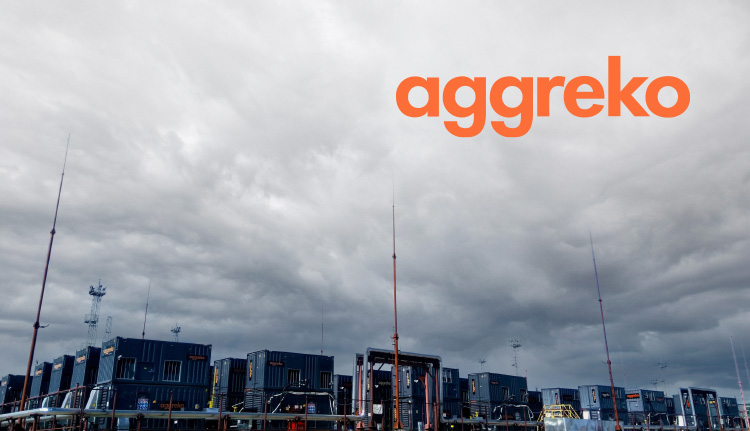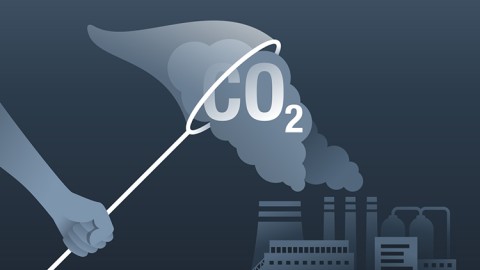Transformative energy usage has become critical, and it presents an opportunity for oil and gas companies to not only transition to cleaner energy, but to also reduce wastage that results from flare gas. According to a recent analysis by the Organisation for Economic Co-operation and Development (OECD), the world is struggling to progress when it comes to climate change outcomes and transformations. Companies and countries need to focus on initiatives and frameworks that allow them to achieve measurable decarbonisation goals within realistic timeframes, and that ensure their decarbonisation strategies are relevant to their unique situations. This perspective is reflected in Egypt’s recent commitments around COP27 and the value it places on putting decarbonisation at the forefront of strategy and decision-making.
Egypt has long had climate change at the heart of its considerations. The country is vulnerable to the threat that it presents with rising sea levels, heat waves and water scarcity seriously impacting the economy and citizens’ well-being. The situation is further complicated by the fact that the ecological footprint per capita is already higher than its biocapacity which puts it at risk of increased carbon dioxide waste. To address these challenges and threats to biodiversity and capacity, Egypt has put in place the Sustainable Development Strategy: Egypt Vision 2030 (Egypt Vision 2030) and the Integrated Sustainable Energy Strategy 2035 (ISES 2035).
Egypt Vision 2030 focuses on the reduction of greenhouse gases (GHGs) by 10% from the energy sector, including oil and gas, and introduces specific legislative steps and projects to help achieve this goal. ISES 2035 reinforces these strategies with a richer look at reform and updates across the energy and power sectors to invest in renewables, to improve investments and to drive a ‘vibrant domestic renewable energy industry.
Egypt has already shown itself as a leader and innovator across multiple areas of the climate change arena – the country created the first sovereign green bond worth $750 million that has 46% of proceeds dedicated to clean transport and 54% towards sustainable water supplies and wastewater management. While the country has been making great strides in reducing flare gas, the country is still ranked among the top 30 flaring countries in the world according to the 2022 Global Gas Flaring Report. And with access to electricity being a challenge across the continent, there is a significant opportunity to utilise this flare gas to generate electricity for the continent.
Aggreko has collaborated closely with several organisations from around the world to help create flare-to-power solutions that align with their climate change and decarbonisation goals, and that help resolves their APG gas challenges. In Egypt, Aggreko partnered with one of the biggest oil fields in the western desert. Their goal was to reduce flaring by 40%, which required an efficient and innovative solution in line with their long-term strategy. They used to have scattered diesel generators over every single well, resulting in significant costs to electrify the production field. Aggreko proposed a centralised power station utilising flare gas instead of diesel, to eliminate the waste associated with flare gas, reduce their carbon footprint and ultimately drive down the cost of energy for the company. Using Aggreko’s bespoke solution consisting of their gas generators, transformers, and switchgear, they were able to replace all their diesel generators, connect all the wells through overhead transmission and supply them with around 10 Megawatt of continuous electricity, while saving around 80 000 litres of diesel per day, resulting in a total saving of around $25 million.
Similarly in Oman, Aggreko designed and engineered a flare gas to power initiative for critical oilfield areas that were situated in extreme conditions. The temperatures in the region rise to above 50 degrees Celsius and there are frequent sandstorms with fog moisture. In addition, the location was remote with only sand roads for access. The APG gas was also limited in availability and required both treatment and cooling with the biggest technical challenge coming in with the flare holding condensates too hot to be fed directly into a gas engine. The result was a bespoke engineered solution that could scrub, treat and cool the gas before going into the engine and a saving of $50,000 US a month. The company could remove its reliance on diesel-fuelled power for critical loads in the oil field and achieve significant decarbonisation of its operations through a reduction in gas flaring. The company has subsequently gained both recognition and credibility in the Oman oil industry for being the first to use flare to power.
According to a recent analysis by the International Association of Oil & Gas Producers (IOGP), the key elements of a solid action plan should involve a commitment to net zero, a willingness to share and adopt best practices, and standardisation and knowledge-sharing. The IOGP also highlighted that flaring and venting should form one of the four disciplines that define energy transition in the country.
Generating power from associated petroleum gas (APG) can reduce the oil and gas sector’s carbon footprint and can be used internally to reduce operating costs and potentially create new revenue streams. This is a radical shift from the perception that APG is a valueless waste product from the oil industry that’s often classified as a problematic stranded gas reserve when in a remote oil field or when piped export isn’t viable. The recent move towards wanting to monetise APG and find better ways of managing it is a move driven by the World Bank’s Zero Routine Flaring by 2030 initiative. Launched in 2015, the initiative ‘brought together governments, oil companies and development institutions to resolve flaring and APG challenges and to drive new environmental regulations that prevent gas flaring around the world. This has resulted in a significant rise in the flare to power projects that allow for organisations to not just align with climate change expectations, but to fully realise the potential locked within their APG reserves.
There are several considerations, however, that have to be assessed before moving into any flare-to-power project. Flexible power solutions that incorporate and accommodates potential fluctuation in APG volumes with the ability to measurably reduce the cost of energy using flared gas to power operations, or export to the grid are a key requirement. It’s also essential to ensure that the quality of APG is always monitored to ensure that it is capable of direct use in generators. Issues such as high H2S, high water content or low methane content can impact quality but are solvable with the right expertise and application knowledge. If an organisation uses the right partner, then they are assured of sophisticated engineering capabilities and technologies that can effectively resolve H2S treatment and NGL stripping.
That said, overcoming these challenges has become far easier than in the past thanks to dedicated flare-to-power solutions developed by engineers and experts in the field. With the right partner, organisations can power their operations with a gas that was previously a liability – they can realign APG from being a wasted by-product, causing emissions to being an energy-generating asset, and they can minimise unnecessary costs while potentially creating a fresh revenue stream that adds value.
Aggreko supports the World Bank’s Zero Routine Flaring by 2030 initiative using technologies that help reduce gas flaring globally and that have been featured in the World Bank’s Global Gas Flaring Reduction Partnership’s Technology Overview. With Aggreko as a trusted partner, companies become part of the climate change solution, measurably reducing their impact on the environment and their contribution to CO2 emissions, black carbon and other pollutants. While associated gas cannot always be used to produce power, Aggreko can help make flare-to-power projects a reality wherever possible and to helping companies turn a liability into a sustainable power opportunity.








